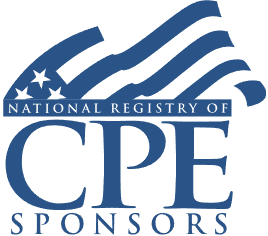Remedying IRA Contribution and Distribution Errors
Correcting Overcontributions, Form 5329 Penalty Calculations and Waivers, Self-Certification for Late Rollovers

Welcome! Strafford is now BARBRI! The expert courses you know from the trusted global leader in legal education.
Course Details
- smart_display Format
On-Demand
- signal_cellular_alt Difficulty Level
Intermediate
- work Practice Area
Tax Preparer
- event Date
Thursday, November 14, 2024
- schedule Time
1:00 p.m. ET./10:00 a.m. PT
- timer Program Length
110 minutes
-
BARBRI is a NASBA CPE sponsor and this 110-minute webinar is accredited for 2.0 CPE credits.
-
BARBRI is an IRS-approved continuing education provider offering certified courses for Enrolled Agents (EA) and Tax Return Preparers (RTRP).
This webinar will explain how to expedite the correction of errors that taxpayers frequently make when contributing and distributing money to and from IRAs. The panelist will review common missteps, including overcontributions, missed required minimum distributions (RMDs) and rollover deadlines, prohibited transactions, appropriate steps to remedy errors, and advice for mitigating related penalties.
Faculty

Mr. Pon has been in practice since 1986 providing comprehensive accounting, tax, payroll, and business advisory services. He specializes in tax preparation, tax representation, tax planning, business planning, financial planning, and estate planning. Services include IRS and state audit representation, business startup services, and charitable planning. Mr. Pon is a frequent author and lecturer to financial and legal professionals and the public on tax and financial planning topics.
Description
The complexity of IRA rules leads to countless opportunities for mistakes. Unfortunately, the noncompliance penalties surrounding retirement contributions and distributions are severe. For 2024, the contribution limits are $7,000 for taxpayers under age 50 and $8,000 for those 50 or older. Overcontributing can lead to a six percent excess penalty that is charged annually until the taxpayer withdraws the excess contribution. If not corrected, the penalty could exceed the amount of the contribution.
Common distribution errors include missed RMDs. Generally speaking, a taxpayer must begin withdrawals from SIMPLE IRAs, SEPs, and other retirement plans at age 72 or 73 if you turn 72 after Dec. 31, 2022. The SECURE 2.0 Act graciously reduced the penalties on overlooked RMDs from 50 percent to 25 percent and, in some instances, to 10 percent.
There are steps taxpayers, and their advisers can take to correct past errors and minimize or negate the stiff penalties surrounding retirement plan errors. For example, Form 5329, Additional Taxes on Qualified Plans (including IRAs), is used to report required excise penalties but can also be used to request a waiver for excise charges on missed RMDs. Additionally, the IRS offers a self-certification process for taxpayers who miss the 60-day rollover window for retirement contributions. Individual taxpayers who contribute to retirement plans and their advisers must understand the relief available to eliminate or mitigate the severe penalties assessed for failing to meet the required IRA requirements for distributions and contributions.
Listen as Larry Pon, CPA/PFS, CFP, EA, USTCP, AEP at Pon & Associates, provides examples of correcting common errors made when contributing and withdrawing money from retirement accounts.
Outline
- IRA contributions and withdrawals: introduction
- SECURE Act's impact on IRAs
- Common errors and corrections
- Overcontributing
- Missed rollover deadlines
- Missed RMDs
- Age 72/73
- Inherited IRAs
- Penalties
- Penalty relief
Benefits
The panelist will cover these and other key issues:
- Steps to remedy and report overcontributions to IRAs
- IRS self-certification process for missed rollover deadlines
- Preparing Form 5329 to ask for a penalty waiver
- The impact of SECURE Act 2.0 on IRA contributions and distributions
NASBA Details
Learning Objectives
After completing this course, you will be able to:
- Identify proven methods to mitigate penalties charged for missed or late IRA distributions
- Determine the RMD requirements under SECURE 2.0
- Decide who qualifies for the IRS self-certification program for late rollovers
- Ascertain how to apply for a penalty waiver for a late RMD
- Field of Study: Taxes
- Level of Knowledge: Intermediate
- Advance Preparation: None
- Teaching Method: Seminar/Lecture
- Delivery Method: Group-Internet (via computer)
- Attendance Monitoring Method: Attendance is monitored electronically via a participant's PIN and through a series of attendance verification prompts displayed throughout the program
- Prerequisite: Three years+ business or public firm experience preparing complex tax forms and schedules, supervising other preparers or accountants. Specific knowledge and understanding of individual income taxation, including itemized deductions, individual income tax credits, net operating loss limitations including carrybacks and carryforwards.

Strafford Publications, Inc. is registered with the National Association of State Boards of Accountancy (NASBA) as a sponsor of continuing professional education on the National Registry of CPE Sponsors. State boards of Accountancy have final authority on the acceptance of individual courses for CPE Credits. Complaints regarding registered sponsons may be submitted to NASBA through its website: www.nasbaregistry.org.

Strafford is an IRS-approved continuing education provider offering certified courses for Enrolled Agents (EA) and Tax Return Preparers (RTRP).
Unlimited access to premium CLE courses:
- Annual access
- Available live and on-demand
- Best for attorneys and legal professionals
Unlimited access to premium CPE courses.:
- Annual access
- Available live and on-demand
- Best for CPAs and tax professionals
Unlimited access to premium CLE, CPE, Professional Skills and Practice-Ready courses.:
- Annual access
- Available live and on-demand
- Best for legal, accounting, and tax professionals
Unlimited access to Professional Skills and Practice-Ready courses:
- Annual access
- Available on-demand
- Best for new attorneys
Related Courses

Redemptions of Partnership Interests: Sections 736(b) vs. 736(a)
Friday, October 31, 2025
1:00 p.m. ET./10:00 a.m. PT

Multistate Tax Treatment of Multi-Tier Partnerships: Ingesting PTET in a Multi-Tier Entity
Friday, September 19, 2025
1:00 p.m. ET./10:00 a.m. PT

IRA Distributions and RMDs: Minimizing Taxes and Meeting SECURE 2.0 Requirements
Available On-Demand

Avoiding Gift and Estate Audit Triggers: Anticipating Audit Issues, IDRs, and Appeals
Tuesday, September 9, 2025
1:00 p.m. ET./10:00 a.m. PT
Recommended Resources
How CPE Can Bridge the Gap Between What You Know and What You Need to Know
- Career Advancement